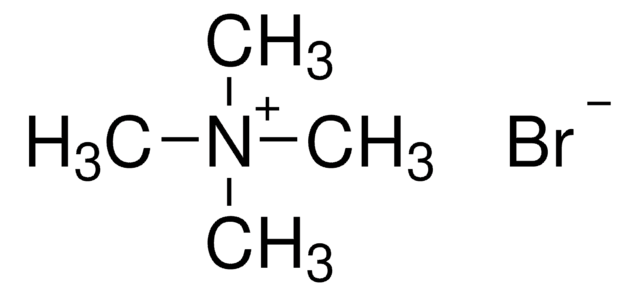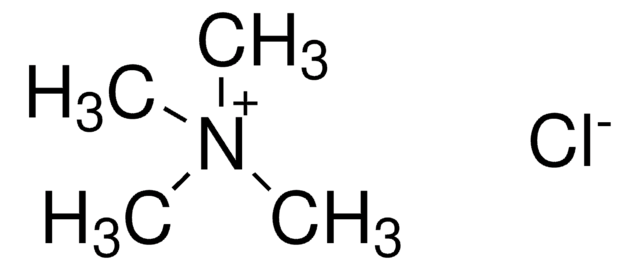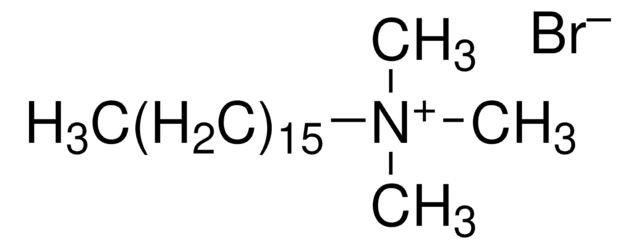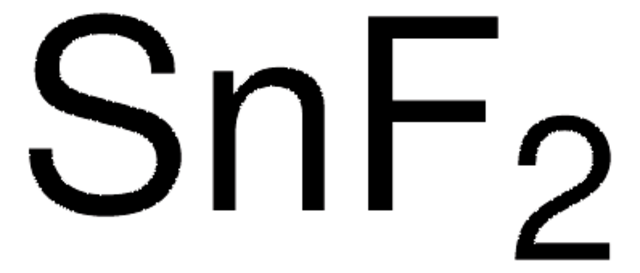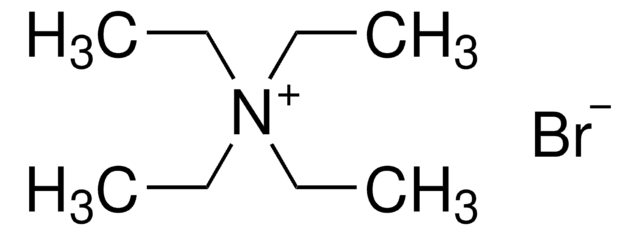87708
Tetramethylammonium bromide
suitable for ion pair chromatography, LiChropur™, ≥99.0% (AT)
About This Item
Recommended Products
description
cationic
Quality Level
Assay
≥99.0% (AT)
form
crystals
quality
LiChropur™
technique(s)
ion pair chromatography: suitable
mp
>300 °C (lit.)
λ
10 % in H2O
UV absorption
λ: 240 nm Amax: 0.06
λ: 250 nm Amax: 0.03
λ: 260 nm Amax: 0.02
λ: 500 nm Amax: 0.02
suitability
corresponds to standard for filter test
SMILES string
[Br-].C[N+](C)(C)C
InChI
1S/C4H12N.BrH/c1-5(2,3)4;/h1-4H3;1H/q+1;/p-1
InChI key
DDFYFBUWEBINLX-UHFFFAOYSA-M
Looking for similar products? Visit Product Comparison Guide
General description
Application
- pH Standardization in Analytical Chemistry: Buffers serve as critical components in the batch-to-batch reproducibility studies for primary pH methods, ensuring high precision in pH measurement across various scientific disciplines, from pharmaceuticals to environmental science (Asakai et al., 2024).
Legal Information
Signal Word
Danger
Hazard Statements
Precautionary Statements
Hazard Classifications
Acute Tox. 2 Oral
Storage Class Code
6.1A - Combustible acute toxic Cat. 1 and 2 / very toxic hazardous materials
WGK
WGK 3
Flash Point(F)
Not applicable
Flash Point(C)
Not applicable
Personal Protective Equipment
Choose from one of the most recent versions:
Certificates of Analysis (COA)
Sorry, we don't have COAs for this product available online at this time.
If you need assistance, please contact Customer Support.
Already Own This Product?
Find documentation for the products that you have recently purchased in the Document Library.
Our team of scientists has experience in all areas of research including Life Science, Material Science, Chemical Synthesis, Chromatography, Analytical and many others.
Contact Technical Service